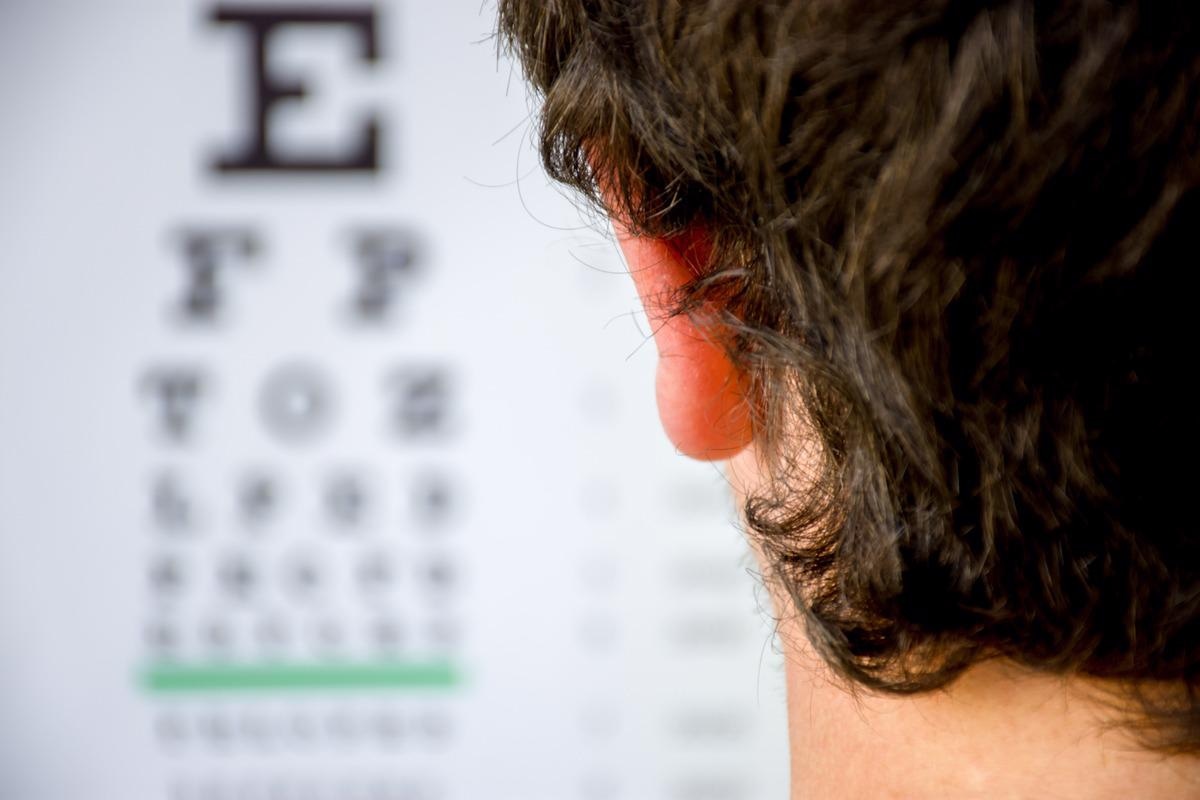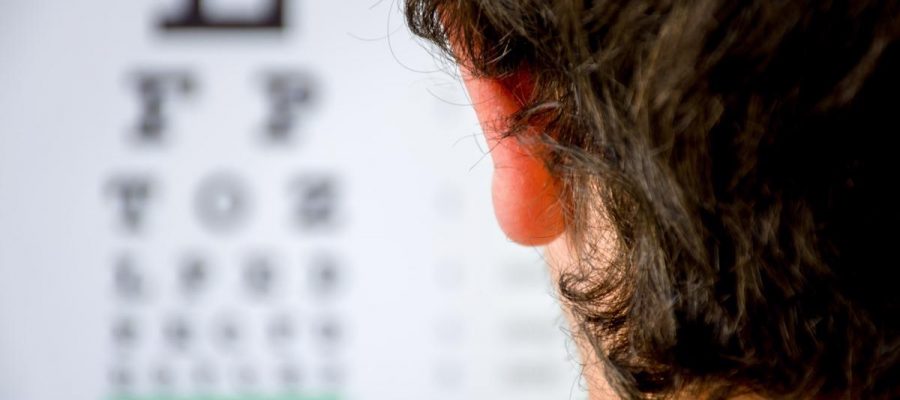Myopia is a refractive error that occurs at the other end of the refractive error spectrum from hypermetropia. More commonly known as nearsightedness, it has long piqued the interest of doctors and scientists since it occurs as a result of ocular expansion. However, a rising 'epidemic' of myopia, characterized by increased prevalence and a whole population shift in distribution towards younger-onset and greater severity, is now a major public health problem worldwide. As a result, a growing number of people are at risk of the potentially blinding consequences of increased myopia severity, as seen in Asia but less so in Europe.

Study: Temporal trends in frequency, type and severity of myopia and associations with key environmental risk factors in the UK: Findings from the UK Biobank Study. Image Credit: Shidlovski/Shutterstock
Myopia severity and onset (childhood vs. adult-onset) are linked: childhood-onset myopia has a definite familial/hereditary basis, progresses into adulthood, and is frequently more severe.
Although it provides the chance to explore the relative importance of genetic predisposition and the nature of environmental risk factors, onset is rarely considered in myopia research. Onset offers the opportunity to further the current focus in both aetiological research and preventive public health interventions on the role of educational experience and intensity in childhood.
Even though severity is always measured in research, it is more common for it to be used as an intermediate rather than a final measure because the latter can only be assigned in middle/late adulthood.
In this study published in PLoS ONE, a team of researchers used the UK Biobank Study to investigate whether changing environmental factors are causing an increase in myopia. The UK Biobank Study is a unique large contemporary adult population sample whose members were born over three decades and have undergone a detailed ophthalmic examination. This allows for the examination of 'historical' cohorts covering a period of significant sociodemographic, economic, and educational change in the United Kingdom, from which current and emerging trends can be identified and examined.
The study
The overall prevalence of primary myopia in the UK Biobank population was 26.9%, with 4.0% having high myopia, 9.5% having moderate myopia, and 13.3% having low myopia. Overall, 45.6% of the subjects were emmetropic, while 27.6% were hypermetropic. The findings show that starting with a baseline overall myopia frequency of 20.0% in cohort 1 (1939–44), there was an increase in subsequent birth cohorts, peaking in cohort 4 (1955–54) and then plateauing.
Nevertheless, the prevalence of childhood-onset myopia peaked at 17.8% in cohort 3, two decades earlier than the prevalence of adult-onset myopia peaked at 15.0% in cohort 5 (1960–1964). Although moderate myopia accounted for more than half of all childhood-onset myopia across all cohorts, high myopia had the greatest relative increase over time in childhood-onset, driving this change in MSE.
Fully adjusted analysis to model associations between myopia and sociodemographic factors revealed that later year of birth was associated with a lower likelihood of myopia overall, but this was driven by a progressive decline in the likelihood of childhood-onset myopia across all cohorts, resulting in a roughly 30% reduction in risk of childhood-onset myopia to those born after the 1960s compared to the baseline cohort 1 (born between 1939 and 1944).
Females were at a higher risk of myopia overall, but this included a 24% increased risk of childhood-onset myopia and a 12% lower risk of adult-onset myopia. Chinese ethnicity was associated with a 90% increased risk of myopia overall. Still, a 19% increased risk of adult-onset and a 240% increased risk of childhood-onset myopia compared to White ethnicity, with all other ethnic groups being 'protective.' The highest level of education was strongly linked to an increased risk of childhood-onset myopia, with a clear 'dose response' relationship. There was a similar gradient for adult-onset myopia but with smaller effect sizes.
Thus, the largest effect sizes for associations with educational attainment after 18 years of age were found in both types, with males having a larger effect size. This is consistent with capturing the highest educational intensity/experience during school as a 'trajectory' or 'threshold' effect regarding myopia risk. Higher current socioeconomic status was associated with an increased risk of adult-onset myopia with a gradient across categories. Still, only the highest socioeconomic status category was associated with childhood-onset myopia.
Implications
This illustration of intricate temporal trends in the United Kingdom indicates a dynamic mix of environmental risk factors and cohort effects in gene-environment interactions, visible only by separating childhood and adult-onset myopia.
Historical evidence of frequency plateauing implies that temporal trends can be stabilized or reversed. Evidence showing a differential impact of educational experience/intensity on childhood-onset and high myopia and its amplification through time indicates that the frequency of childhood-onset myopia will continue to rise in the future, regardless of educational intensity/experience.
However, focusing solely on childhood-onset myopia will not address myopia's significant public health consequences. Adult-onset myopia is less severe than childhood myopia, but it is still more common in the UK, posing a significant personal and societal hardship. A mixed economy of research is required to expand the understanding of modifiable risk factors across the life course and how to address them.
- Cumberland PM, Bountziouka V, Hammond CJ, Hysi PG, Rahi JS, on behalf of the UK Biobank Eye and Vision Consortium (2022) Temporal trends in frequency, type and severity of myopia and associations with key environmental risk factors in the UK: Findings from the UK Biobank Study. PLoS ONE 17(1): e0260993. doi: https://doi.org/10.1371/journal.pone.0260993 https://journals.plos.org/plosone/article?id=10.1371/journal.pone.0260993
Posted in: Medical Science News | Medical Research News | Medical Condition News | Healthcare News
Tags: Education, Frequency, Gene, Genetic, Myopia, Nearsightedness, Public Health, Research, UK Biobank
.jpg)
Written by
Colin Lightfoot
Colin graduated from the University of Chester with a B.Sc. in Biomedical Science in 2020. Since completing his undergraduate degree, he worked for NHS England as an Associate Practitioner, responsible for testing inpatients for COVID-19 on admission.
Source: Read Full Article
